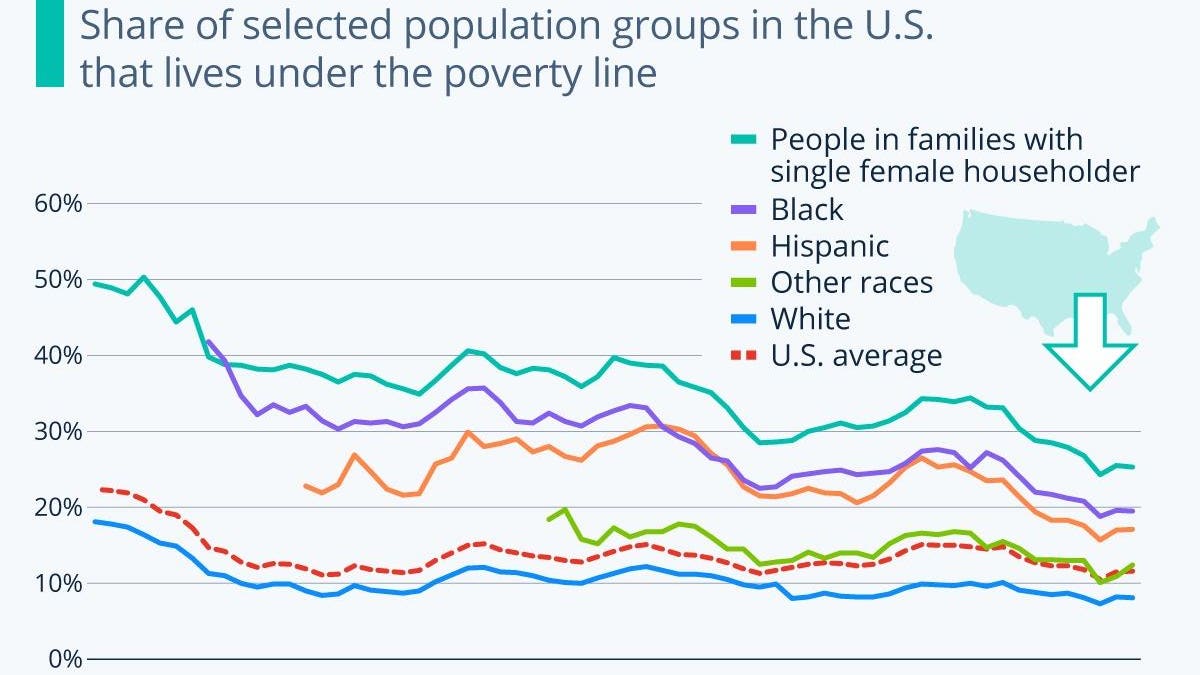A smaller share of Americans lives below the poverty line today than when the Census Bureau first started measuring this metric in 1959. The people who are most at risk of poverty in the U.S. have remained the same during this time period: Single mothers and people of color. However, the poverty gap between population groups has narrowed.
According to the data, 11.6% of Americans lived under the poverty line in 2021, the latest year available. This is a slight step up from the pre-pandemic number of 10.5% in 2019, but below rates of the Great Recession (15.1% in 2010), the 1990s recession (also 15.1% in 1993) and those of the early and mid-1960s (17%-22%).
People of color are disproportionately affected by poverty: 19.5% of Black Americans lived under the poverty line in 2021, as did 17.1% of Hispanics. The same was true for just 8.1% of white people. The share of poor people of other races or multiple races, the latter being a designation added by the Census in 2002, was 12.4%—about in line with the U.S. average. The most common race among this group was Asian American.
Single mothers and their family members, or as the Census puts it—people in families with female householder, no spouse present—have been most affected by poverty in the U.S. throughout the latter half of the last century and into today. But the group has also seen the most progress made. Poverty of single female householders and their families decreased from a nearly 50% share in 1959, when being a single mother was still heavily stigmatized, to a arguably still high 25% in 2021.
For comparison, Black poverty in the U.S. decreased from nearly 42% in 1966 to 19.5% today. For Hispanics, there has been more stagnation, as the group that experienced an almost 23% share of poverty in 1972 still saw around 17% poverty among its members most recently. Nevertheless, as the share of white poverty has only changed by around four percentage points since the beginning of the 1970s, progress has been undeniable despite the gap remaining.
Social safety nets
The advent of the U.S. social safety net had a visible effect on poverty in 1964 when the administration of President Lyndon B. Johnson introduced food stamps, community health centers and the Head Start program. Expansion of government programs, including Medicaid and Medicare, have been credited with reducing U.S. poverty since then—albeit at a slower pace. The metric decreased overall, while the state of the economy also had an influence through the years, most notably causing poverty to spike during recessions.
The New York Times
NYT
—
Charted by Statista
Read the full article here





